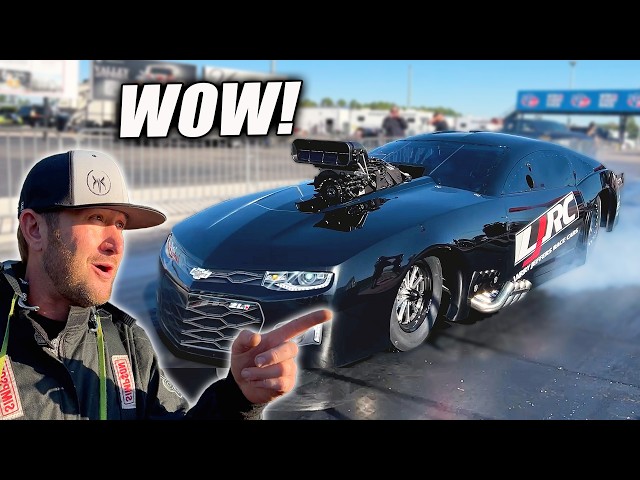Take a look at these 10 Shocking Drag Racing Crashes That Changed the Sport Forever!
Drag racing has always lived on the razor’s edge.
Massive horsepower.
Insane speeds.
Unpredictable surfaces.
And drivers willing to push the limits of physics.
But sometimes… the limit pushes back.
These 10 shocking crashes didn’t just destroy cars — they changed rules, safety standards, chassis design, and the future of the sport forever.
Let’s revisit the moments that reshaped drag racing.
1. Don “Big Daddy” Garlits – The Leg-Shattering Explosion (1970)
A clutch explosion blew Garlits’ dragster in half, nearly severing his foot.
The crash was horrific — but it sparked innovation.
Impact on the sport:
🔥 The invention of the rear-engine dragster
🔥 Safer drivetrain containment standards
🔥 The end of exposed driveline setups
This single moment changed Top Fuel forever.
2. Scott Kalitta – The Fatal Funny Car Explosion (2008)
One of the darkest days in NHRA history.
Kalitta’s engine exploded, sending his Funny Car into the net at 300+ mph.
Impact:
🔥 NHRA shortened nitro racing distance to 1,000 feet
🔥 Major upgrades to shutdown areas
🔥 Mandatory dual parachute & drag chute tech changes
The crash redefined nitro safety overnight.
3. John Force – The Violent, Bone-Breaking Crash (2007)
A catastrophic explosion ripped Force’s car apart at 300 mph.
He broke multiple bones but survived.
Impact:
🔥 NHRA mandated better chassis design
🔥 Introduction of reinforced footboxes & cage rails
🔥 Revamped Funny Car body mounting systems
Force’s crash reshaped chassis rules for the next generation.
4. Eric Medlen – The Chassis Oscillation Tragedy (2007)
Medlen’s tire shake was so violent it caused unsurvivable head trauma.
Impact:
🔥 The Eric Medlen Project, revolutionizing:
-
chassis flex
-
cockpit padding
-
helmet technology
🔥 Suspension changes to reduce oscillation
This crash changed how teams approached safety engineering.
5. Kenny Bernstein – “The Blowover” (1995)
Bernstein’s Top Fueler lifted off like an airplane at 300 mph.
Impact:
🔥 Aerodynamic changes to nose cones
🔥 Mandatory downforce requirements
🔥 Better wind-tunnel testing
Blowovers became far rarer after this.
6. Leah Pruett – The Violent Barrel Roll (2015)
Her dragster’s rear end snapped, sending the car flipping down the track. She miraculously walked away.
Impact:
🔥 Stronger rear-end mounting rules
🔥 Updates to carbon-fiber body structuring
A reminder that even modern engineering can fail brutally.
7. Doug Kalitta – Chute Failure at 300+ MPH
Multiple times in his career, Kalitta has faced chute failures — the most famous ending in a scary crash into the sand trap.
Impact:
🔥 New parachute deployment standards
🔥 Backup chute requirement enforcement
🔥 Better braking and energy absorption systems
Kalitta’s incidents pushed NHRA to modernize stopping power.
8. Cruz Pedregon – Nitro Explosion at Pomona
A full-body explosion shredded the Funny Car shell and threw parts across the track.
Impact:
🔥 Stronger composite Funny Car bodies
🔥 Better fragmentation containment
🔥 Safer ignition and fuel-system design
This crash forced NHRA to rethink nitro-body safety.
9. Larry Dixon – The Car Splitting in Half (2015)
Dixon’s dragster literally snapped in the middle during a run — a mechanical nightmare nobody believed could happen.
Impact:
🔥 Immediate NHRA chassis certification changes
🔥 Mandatory crack inspections & ultrasonic checks
🔥 Stronger center-section build requirements
This moment changed how every Top Fuel chassis is built.
10. Steve Torrence – Top-End Flip at 330 MPH
A rare but terrifying high-speed loss of control that sent Torrence tumbling.
Impact:
🔥 Stricter wing-mount inspections
🔥 Updated tire rules
🔥 New cockpit protection layers
The crash proved that even the best drivers are one mistake away from disaster.
Final Thoughts: Drag Racing Will Always Be Dangerous — But These Crashes Saved Lives
Every one of these crashes was violent, tragic, or downright unbelievable.
But each one also helped push:
✔ better technology
✔ better track design
✔ better safety gear
✔ better rules
✔ better engineering
Drag racing is safer today because of what we learned from these painful moments — but it will never stop being a sport where drivers stare danger in the face at 300+ mph.
And that’s what makes it legendary.


